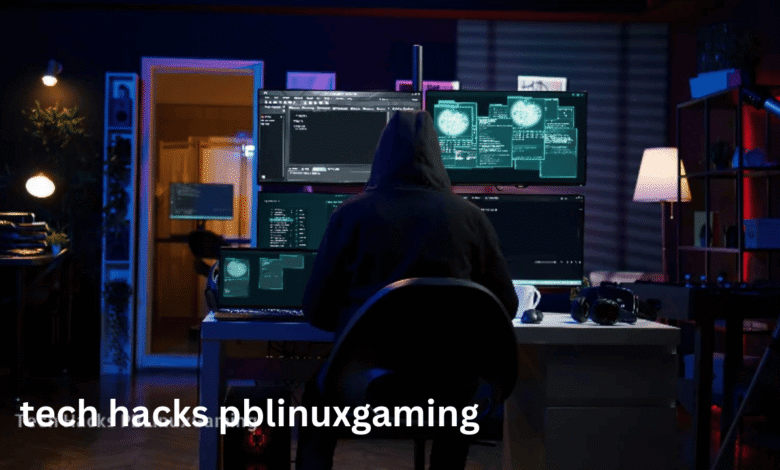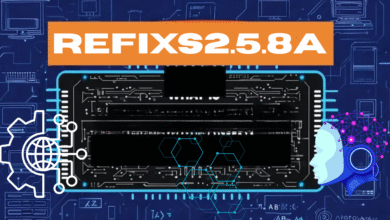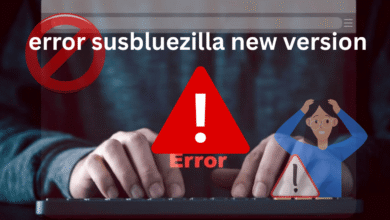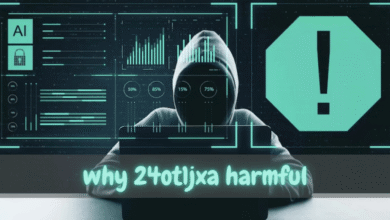tech hacks pblinuxgaming: Practical steps to boost Linux gaming performance

Linux is no longer a niche for gamers — with the right tweaks you can get smooth frame rates, reliable controller support, and compatibility with many Windows titles. The tech hacks pblinuxgaming approach collects practical, low-risk changes you can apply today: overlays and monitoring, compatibility layers, kernel and system tuning, and small peripheral fixes that together make a huge difference to playability. These techniques are the backbone of many modern Linux gaming guides and are designed to be approachable for both beginners and experienced users. pblinuxgaming.com
Why tech hacks pblinuxgaming matter for modern players
Games push hardware and software in ways that reveal bottlenecks: scheduler behavior, driver settings, input latency, and missing visual features. The tech hacks pblinuxgaming philosophy treats each of those areas separately so you can fix the easy things first and then move to deeper tuning. A small change — enabling a game-mode daemon, switching a driver, or applying an overlay — often yields immediate, visible improvements in frame times and stability. These hacks are practical and iterative, so you can test a single change and measure the result. pblinuxgaming.com
Core tools that appear in most tech hacks pblinuxgaming guides
Most collections of tech hacks pblinuxgaming recommend a handful of repeatable tools because they solve common problems across distributions:
- GameMode: a daemon that tweaks CPU governors and I/O priorities while a game runs.
- MangoHud: an overlay for frame rate, temperatures, and frametimes to measure improvements.
- Proton GE and Wine prefixes: compatibility layers that let many Windows-only titles run on Linux.
- vkBasalt or shader overlays: post-processing for sharpening or visual effects.
- Lutris, ProtonUp-Qt, or other launchers to manage multiple runtimes and versions.
MangoHud in particular is widely used for live performance monitoring and is actively maintained as an overlay for Vulkan and OpenGL applications. GitHub
How to get started quickly with tech hacks pblinuxgaming
If you want a fast, safe win, start with monitoring and a game-mode helper. Install a HUD to see baseline FPS and frametimes, then enable GameMode for any game session to let the system prioritize gaming processes. Seeing real numbers makes subsequent steps meaningful: instead of guessing whether a tweak helped, you can compare metrics before and after.
Practical first steps many users follow in tech hacks pblinuxgaming setups:
- Install MangoHud and set up a simple overlay to display FPS and frametimes.
- Enable GameMode for your primary launcher (Steam, Lutris, Heroic) and test with a demanding scene.
- If you play Windows-only titles, install ProtonUp-Qt and try a Proton GE build that’s known to improve compatibility. GamingOnLinux
Installing and configuring MangoHud and GameMode (simple commands and tips)
A hands-on setup lets you see immediate improvements. After installing MangoHud, you can launch a game with MangoHud enabled to display CPU, GPU, temperatures, and frame timing. GameMode runs in the background while the game is active and releases control when you exit, so it doesn’t require permanent system changes. Keep configuration files in your home folder so tweaks are reversible and test one change at a time.
Common command-line patterns and tips:
- Test MangoHud by prepending it to your launcher command (for many setups): mangohud %command%
- For GameMode, enable integration in Steam or Lutris launch options or run games under gamemoderun to confirm it works.
Using performance overlays and game-mode daemons together is a staple recommendation in tech hacks pblinuxgaming guides because they provide both action and measurement. GamingOnLinux
Using Proton GE and Lutris to play Windows games
Windows-only games are often playable on Linux with modern compatibility layers. Proton GE (a community-enhanced Proton build) and Lutris let you choose specific versions of runtimes to avoid crashes or anti-cheat conflicts. tech hacks pblinuxgaming workflows frequently include installing a community Proton build, creating a dedicated prefix for problematic games, and testing different Proton versions until stability is achieved.
Best practices in this area include keeping separate prefixes for games with strict anti-cheat, using ProtonUp-Qt to manage versions, and checking community reports for the specific title you want to run — these habits reduce trial-and-error and speed up problem solving. Measure Take
Visual tweaks and overlays: vkBasalt and shader filters
If you want sharper visuals or post-processing fixes, vkBasalt provides a lightweight way to apply effects like sharpening, SMAA/FXAA, and LUT-based color correction without editing each game. Combine vkBasalt with MangoHud so you can test visual filters alongside frame-rate measurements. tech hacks pblinuxgaming users will sometimes maintain per-game vkBasalt profiles to get a consistent look without sacrificing performance.
Notes from community testing show vkBasalt can be applied without root and works well with many Vulkan-based games, though some launchers or OpenGL titles may need different flags or dlsym tricks to ensure filters load correctly. Reddit
Kernel and system-level tweaks that move the needle
When you’ve exhausted easy wins, kernel and system tuning offers deeper improvements. Lowering vm.swappiness to keep more data in RAM, using a low-latency or gamer-focused kernel, and adjusting scheduler priorities are common steps in tech hacks pblinuxgaming routines. These changes can reduce stutters and make input feel more responsive, but they should be applied carefully and tested one at a time.
A common, reversible tweak is lowering swappiness to a value like 10 to avoid unnecessary swapping during gaming sessions; persistent changes belong in system configuration files so they survive reboots. Document each change so you can revert if needed. Squid Academy
Controller and peripheral tweaks for smoother input
Input devices vary, and controller quirks are a frequent annoyance. Steam Input remapping, configuring udev rules to standardize device names, or using xboxdrv for older controllers are all part of the tech hacks pblinuxgaming toolbox. Small scripts can disable touchpad input when a controller is active, or remap extra buttons for in-game macros. Test each tweak in a short session to ensure the mapping feels natural and doesn’t conflict with desktop behavior.
Security and anti-cheat considerations
While community Proton builds and custom kernels can fix many issues, anti-cheat systems sometimes reject modified runtimes. tech hacks pblinuxgaming strategies emphasize using separate prefixes or dedicated profiles for titles with strict anti-cheat, and avoiding system-wide modifications that could be interpreted as tampering. The principle is simple: pick the least invasive change that solves the problem and prioritize game stability and account safety.
Quick checklist: apply these tech hacks pblinuxgaming steps today
- Install MangoHud and confirm you can see FPS and frametimes.
- Enable GameMode for your launcher or use gamemoderun for tests.
- Install ProtonUp-Qt and try a Proton GE build for Windows-only games.
- Add vkBasalt or a shader profile only if you need visual fixes.
- Lower vm.swappiness to 10 for test sessions; monitor memory and performance.
- Keep separate Wine/Proton prefixes for games with anti-cheat.
- Use Lutris or compatible launchers to manage runtimes and dependencies.
These short, repeatable tasks are the heart of many tech hacks pblinuxgaming writeups: they are low-risk, measurable, and reversible, so you can learn and iterate without breaking your system. pblinuxgaming.com
Troubleshooting common problems when using tech hacks pblinuxgaming
If a tweak seems to make things worse, roll it back and test a different approach. Use the overlay to capture baseline numbers before every change. Common fixes for regressions include updating drivers, reverting a Proton version, or reconfiguring a controller mapping. Community forums and guides often list per-game tweaks that save hours of trial-and-error; when in doubt, search for the specific title plus the tweak you applied.
Conclusion
tech hacks pblinuxgaming is a practical, measurable way to improve Linux gaming: start with overlays and a game-mode helper, move to compatibility tools for Windows titles, and reserve kernel or system-level changes for when you need deeper improvements. Keep a testing mindset — change one thing at a time, measure results, and keep configuration reversible. With this approach you’ll build a stable, high-performance gaming setup that grows as you learn new tools and techniques. The tech hacks pblinuxgaming method is less about one perfect tweak and more about a sequence of sensible, documented steps that together unlock a great gaming experience on Linux.



